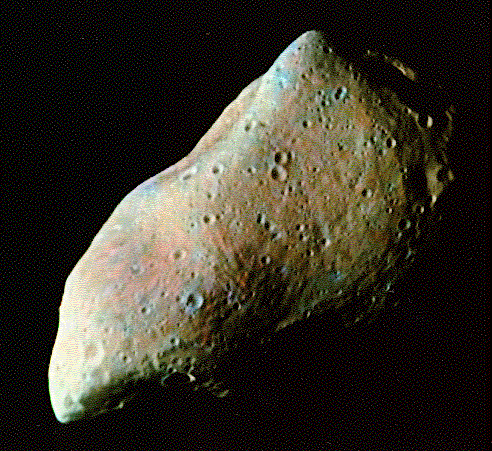

Abstract (Chapman et al., 1996, Icarus, 120, 231-245):
Gaspra's largest-scale shape is highly irregular, perhaps faceted. The biggest facet exceeds the largest crater (relative to body radius) ever observed on a satellite or expected from collisional fragmentation models. Facets cannot be successive crater-forming impacts; later scars would have destroyed earlier ones. Far-encounter images show a more lumpy than faceted visage of Gaspra; the two craters are about 3 km in diameter, not even half the radius of Gaspra. We expect that Gaspra was created by collisional fragmentation of a larger parent body. Its gross configuration may reflect collisional spallation of the parent. Certainly, megaregolithic processes of reaccumulation and blanketing and/or shaking are evident, due to subsequent sub- catastrophic collisions. Gaspra's subdued craters peek through the effects of the last such collision. That smoothed surface has been cratered ever since by the steep production function, which, however must become shallower again below 10 m. Since the overall density of fresh craters is low, Gaspra must be relatively youthful. Scaled to a calculated 0.5 Gyr age for bodies of its size, based on asteroid collision models and assuming that Gaspra does not have metallic strength, its cratering lifetime is about 0.2 Gyr, with large modelling uncertainties.
The cumulative volume of all visible craters could create a regolith only <10 m deep, even if all ejecta were retained by Gaspra's weak gravity. Gaspra's modern soil-like regolith, produced by the steep production function, is probably very thin. Indeed, Gaspra's surface must be under net erosion and provides an inadequate environment for any mature weathering and reworking of its surface layer during the last 0.2 Gyr.
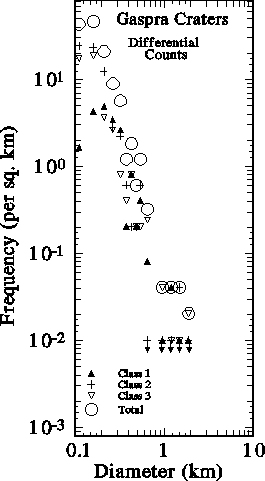
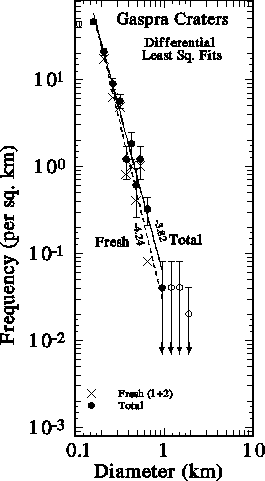
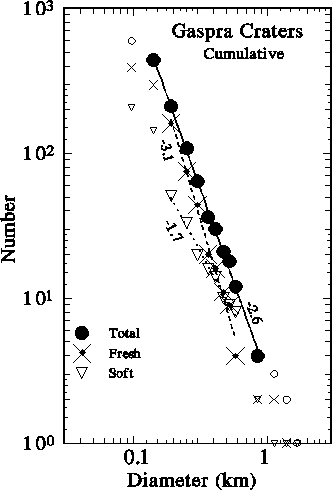
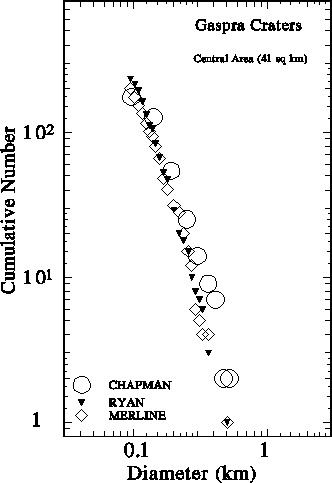
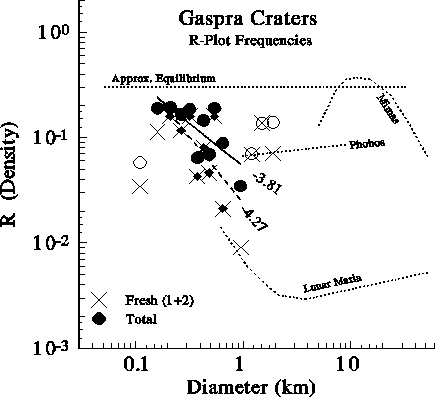
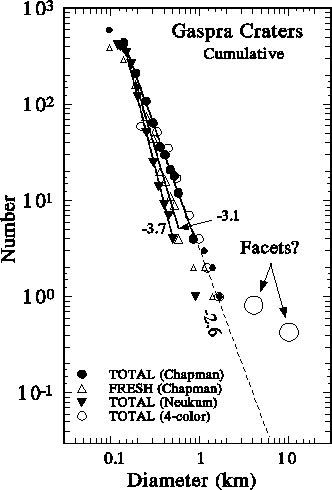
 Return to Clark R. Chapman's
Home Page
Return to Clark R. Chapman's
Home Page
 Homepage
Homepage